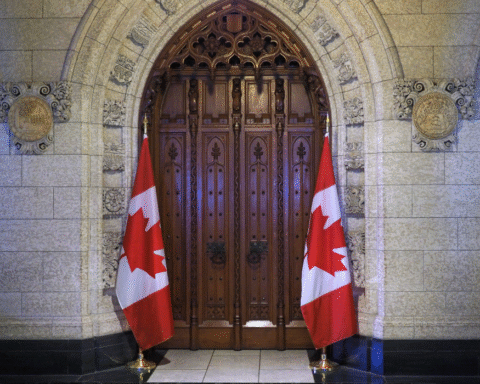Most people think president Trump 2.0 will be a disaster for the climate.
There is much evidence to justify this sentiment. Case in point: his pick for energy secretary, oil wildcatter Chris Wright, said last year, “There is no climate crisis, and we’re not in the midst of an energy transition, either.” But what if a different outcome is possible?
To explore this question in a clear-eyed way, two things matter: how much can a president tip the scale on climate solutions, and in which direction will it tip?
Let’s follow the money: the United States accounts for 15% of global investments in climate solutions, so 85% of the action is elsewhere (mostly China).
Download research brief from Corporate Knights: Sustainability transition gains momentum
Also, don’t forget that while the executive branch of the U.S. government can be a powerful bully pulpit, there are other influential actors, including the private sector, state and local governments, and civil society.
It’s also worth reviewing Trump 1.0.
Despite Trump’s promises to “bring back coal,” a record 50 coal plants were shuttered during his first term, plus another 51 announcements of closures as the economics of coal went into the toilet.
In terms of U.S. energy investments, green energy and fossil fuels ballooned across the board during Biden’s presidency, but green energy as a proportion of total energy investments were not that much different than in Trump’s time (55% versus 51% in each of their last years in office).
President Trump 2.0 is not a blanket negative and could be an inadvertent net positive on the sway he holds over the world’s march toward a climate solutions economy.
– Toby Heaps, Publisher, Corporate Knights
Many people still believe that the primary factors driving demand for green power and electric cars are politically driven subsidies, but that is no longer the case. Economic logic is now the primary driver. Green power and electric cars have become a lot cheaper to the point where they are now better bargains than their fossil fuel counterparts – without subsidies. Solar and wind combined with battery power are now cheaper than fossil fuels in most cases.
Despite all the market imperfections, for every $1 invested in fossil fuels globally, $2 is now invested in clean energy, while electric or hybrid cars now account for more than half of new cars sold in China.
Three factors that matter most to climate solutions
There are a few important elements to keep in mind when evaluating the potential impact of Trump’s presidency.
1. Red tape: 2,500 gigawatts of green energy in the United States is in limbo waiting for grid connection permits, roughly double the entire installed electricity capacity.
2. Interest rates: They represent up to 40% of renewable energy costs when rates are high.
3. Oil prices: When the price of oil goes up, it increases the earnings, economic clout and political power of oil and gas companies.
In other words, if you have less red tape to tangle up green energy projects, lower costs of capital and lower oil prices (so big oil has less cash in its jeans to tip the political scales), then you get more climate solutions deployed.
And there is a wild card this time: Elon Musk, who recently reiterated his long-standing mission to achieve national and individual energy independence underpinned by a vertically integrated sustainable-energy ecosystem.
Three factors that may work in favour of clean power
Trump’s impact on renewables won’t be all negative, for several reasons:
1. Musk’s new role in the White House overseeing a vast deregulation agenda will not be all bad news for the environment. Fossil fuel projects will be green-lit faster, but renewables will benefit too, and we already know they have the cost-competitiveness to be market winners.
2. Trump loves low interest rates (and he is happy to twist the Fed’s arm as required) because they buoy stock markets (potential inflationary effects of tariffs be damned).
3. Trump’s obsession with cheap gas contributed to cutting the valuation of oil and gas companies in half during his first term, a stark contrast to the 100% increase we saw during Biden’s presidency.
Bottom line for climate action: president Trump 2.0 is not a blanket negative and could be an inadvertent net positive on the sway he holds over the world’s march toward a climate solutions economy.
If you believe in economic logic, the takeaway is that the right time to go all in on the energy transition was yesterday. The second-best time is now, and that’s true no matter who’s president of the United States.
Toby Heaps is co-founder and publisher of Corporate Knights.







